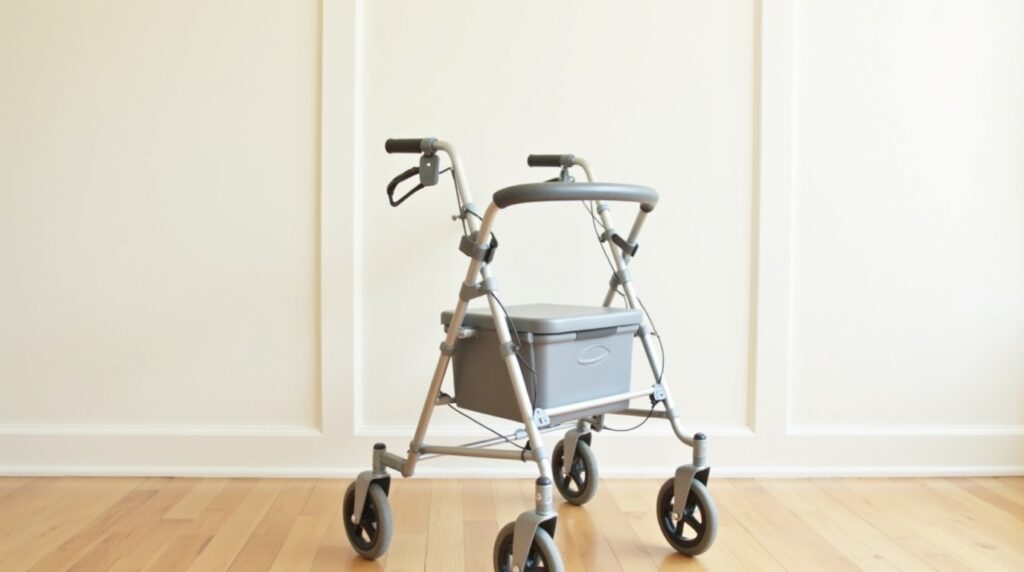Recovering from an injury, surgery, or managing a chronic condition often comes with challenges related to mobility and independence. For many individuals, regaining strength and confidence in walking is a crucial step in their rehabilitation journey. This is where assistive devices, like folding walkers with wheels, play a pivotal role. These walkers not only offer support but also enhance safety, convenience, and overall quality of life during recovery.
In this post, we’ll explore how folding walkers with wheels support rehabilitation and recovery, their benefits, key features, and tips on choosing the right one to help you or your loved one regain mobility with confidence.
Understanding the Role of Walkers in Rehabilitation
Walkers are among the most commonly prescribed mobility aids by healthcare professionals such as physical therapists, occupational therapists, and doctors. They provide stability and support to individuals who have difficulty walking due to:
- Surgery (e.g., hip or knee replacement)
- Injury (e.g., fractures, sprains)
- Neurological conditions (e.g., stroke, Parkinson’s disease)
- Chronic conditions (e.g., arthritis, muscle weakness)
- Balance disorders or dizziness
A walker helps redistribute weight and reduce the load on affected limbs, making walking safer and less painful. This support encourages patients to stay mobile, which is critical for faster recovery, maintaining cardiovascular health, preventing muscle atrophy, and avoiding complications like blood clots.
What Makes Folding Walkers with Wheels Ideal for Rehabilitation?
Traditional walkers require users to lift the walker with each step, which can be physically demanding and slow down movement. Folding walkers with wheels, however, bring a host of advantages tailored for rehabilitation and recovery:
1. Enhanced Mobility with Wheels
Wheels reduce the effort needed to move the walker forward, making it easier for patients with limited strength or stamina to stay mobile. Many folding walkers feature front wheels that glide smoothly over indoor and outdoor surfaces, reducing strain on wrists and arms.
2. Compact and Portable Design
A folding walker can be collapsed into a compact size, making it easy to transport and store. This is especially beneficial for individuals who need to take their walker to therapy sessions, doctor visits, or travel with family. The portability factor encourages consistent use, which supports rehabilitation goals.
3. Improved Stability and Safety
Folding walkers with wheels typically come with hand brakes, adjustable height settings, and non-slip grips to enhance user safety. Hand brakes allow users to control the walker’s speed and prevent it from rolling away on inclines, reducing the risk of falls.
4. Versatility in Various Environments
Whether at home, outdoors, or in rehabilitation centers, folding walkers with wheels adapt to different terrains. Many models come with larger wheels for outdoor use or are designed to maneuver tight indoor spaces, making them versatile for users’ changing needs.
How Folding Walkers with Wheels Aid in Different Stages of Recovery
The rehabilitation process often involves multiple stages — from initial limited mobility to gradual increase in walking distance and speed. Folding walkers with wheels provide tailored support throughout these stages.
Early Recovery: Maximizing Safety and Support
Immediately after surgery or injury, patients typically have limited weight-bearing ability and need maximum support to prevent falls. Folding walkers with wheels offer stability while reducing the physical effort required to move. Features like brakes and sturdy frames provide reassurance to users and caregivers alike.
Mid Recovery: Encouraging Independence and Endurance
As strength improves, patients can use the walker to practice longer walking distances. The wheels reduce fatigue and encourage longer activity sessions, which is critical for rebuilding endurance. Some walkers also include seats, allowing users to rest when needed and avoid overexertion.
Late Recovery: Transitioning to Normal Gait
Toward the end of rehabilitation, patients work on regaining balance and normal walking patterns. Folding walkers with wheels are lightweight and easy to maneuver, supporting users as they practice safe ambulation and prepare to transition to cane or no assistive device.
Benefits of Folding Walkers with Wheels for Rehabilitation
1. Promotes Early Ambulation
Early movement after surgery or injury is linked to better outcomes, including reduced complications and faster healing. Folding walkers with wheels enable patients to begin walking sooner by providing reliable support and minimizing effort.
2. Reduces Risk of Falls
Falls are a serious concern during recovery, especially for older adults. Walkers with wheels improve balance and stability, reducing the likelihood of falls and associated injuries.
3. Boosts Confidence and Mental Well-being
Regaining mobility contributes to a sense of independence and control over one’s life. Folding walkers with wheels help users move confidently without fear of falling, positively impacting mental health during recovery.
4. Facilitates Physical Therapy and Exercises
Physical therapists often incorporate walking exercises into rehabilitation plans. Walkers with wheels allow patients to perform these exercises safely and effectively, accelerating progress.
5. Adapts to Changing Needs
Because folding walkers are adjustable and portable, they can accommodate changes in the user’s condition and environment, making them a long-term investment in rehabilitation.
Choosing the Right Folding Walker with Wheels for Rehabilitation
Selecting the appropriate folding walker can make a significant difference in recovery outcomes. Here are key factors to consider:
1. Weight Capacity
Ensure the walker supports the user’s weight comfortably and safely.
2. Wheel Size and Type
Larger wheels are better for outdoor use and uneven surfaces, while smaller wheels work well indoors.
3. Braking System
Hand brakes offer control and safety, especially on ramps or slopes.
4. Adjustability
Height-adjustable handles and foldable frames provide customized comfort and ease of transport.
5. Additional Features
Look for built-in seats, storage pouches, or baskets to enhance convenience during therapy sessions or daily use.
Tips for Using Folding Walkers with Wheels Effectively
- Consult Your Healthcare Provider: Always follow professional guidance on walker use and gait training exercises.
- Practice Proper Posture: Keep your back straight and use your arms to support weight evenly.
- Check the Walker Regularly: Inspect wheels, brakes, and frame for wear or damage to ensure safety.
- Use on Appropriate Surfaces: Avoid very rough or slippery terrain unless the walker is specifically designed for it.
- Combine with Physical Therapy: Use the walker as part of a comprehensive rehabilitation plan including strength and balance training.
Real-Life Success Stories
Many individuals have successfully used folding walkers with wheels to regain mobility and independence:
- Mary, 72: After hip replacement surgery, Mary used a folding walker with wheels to start walking within days. The ease of folding allowed her to take it to her physical therapy appointments, accelerating her recovery.
- John, 60: Recovering from a stroke, John found that the wheeled walker helped him safely practice walking and improve his balance. The adjustable handles allowed his therapist to customize his fit as he gained strength.
These examples highlight how the right assistive device can transform the rehabilitation experience.
Conclusion
Folding walkers with wheels are a vital tool in supporting rehabilitation and recovery. They combine stability, ease of use, and portability, enabling individuals to regain mobility safely and confidently. By promoting early ambulation, reducing fall risks, and adapting to evolving needs, these walkers enhance the quality of life during recovery.
If you or a loved one are embarking on a rehabilitation journey, consider consulting a healthcare professional about incorporating a folding walker with wheels into your recovery plan. With the right support, you can take confident steps toward renewed independence and wellness.
If you want, I can also help you create a summary, FAQs, or recommend specific models. Would you like that?


